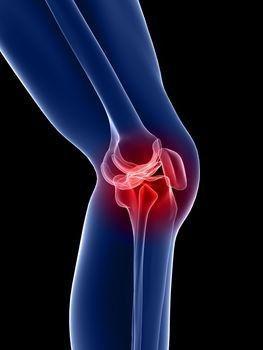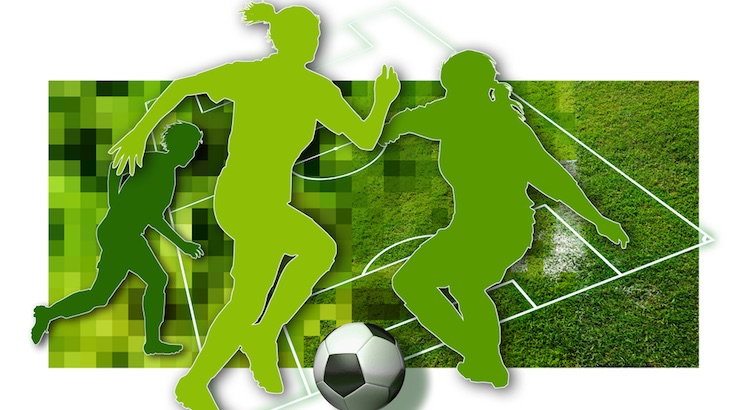ACL Injury Prevention Information for Females
Soccer News: John Gallucci Jr. on female ACL injuries and how you can reduce the risk. In the USA, 80,000 high school aged, female athletes will suffer from an ACL injury – why do females suffer close to 10 times more ACL injuries than males? John Gallucci Jr. is the MLS Medical Coordinator and medical analyst for coverage of the 2015 FIFA Women’s World Cup 2015 on FOX Sports.
One of the most common injuries for youth and adult – professional, amateur and youth — occur in the knee – is there anyway of lowering the risk? And, why do more female soccer players experience ACL issues than males? We asked our dynamic expert in injury prevention, rehabilitation, sports medicine and athletic conditioning, John Gallucci, Jr. who oversees the medical care of 600 professional MLS soccer players.
The former Head Trainer of the New York Red Bulls MLS team and a Sports Medicine consultant for professional athletes in the NHL, NFL, NBA, MLB, and USA Wrestling, Gallucci, Jr. is also President of JAG Physical Therapy & JAG Pediatric Therapy. He knows knees.
The prevalence of Anterior Cruciate Ligament, or ACL tears in athletics has become an epidemic, especially when we are talking about the female athlete population. It has become common place to cringe when we, as athletes, parents, coaches or health care professionals watch a female athlete go down holding their knee.
In the United States alone, studies have shown that upwards of 80,000 high school aged, female athletes will suffer from an ACL injury, with most of those injuries occurring in soccer and basketball. But why do females suffer close to 10 times more ACL injuries than males?
Let’s Talk Anatomy

The ACL is one of four main stabilizing ligaments in the knee and it lies in the middle of the knee underneath the kneecap, connecting the femur (thigh bone) to the tibia (shinbone). The ACLs primary roles are to prevent the shinbone from sliding out in front of the thighbone, as well as providing rotational stability to the knee.
Now that we know what it is, it may help us to understand how it tears. It has been estimated that 70 percent of all ACL tears are considered non-contact, meaning the injury happens when there is no one around the athlete. The most common mechanism of injury to an ACL is when an athlete is decelerating or stopping and suddenly pivots or changes direction while their foot is planted. The tear or sprain occurs because the already taut ACL overstretches in trying to compensate for the sudden rotational force on top of working to prevent the tibia from sliding forward.
Why Are Women More Likely to Tear Their ACL?
 Although science has yet to prove one theory over another, there are several factors that this prevalence can be attributed to:
Although science has yet to prove one theory over another, there are several factors that this prevalence can be attributed to:
- Muscular imbalance between the hamstrings and quadriceps.
- Greater Q angle – Women have a greater Q angle, or angle at which the femur meets the tibia, than men due to a woman’s wider pelvis. This greater angle places a concentrated force on the ACL during each twist and turn at the knee.
- Biomechanical differences in running and landing techniques (i.e. knees falling in)
- Female hormones- Studies have shown that female hormones allow for greater flexibility and laxity of muscles, tendons, and ligaments. If the soft tissue structures surrounding the knee are lax, a tremendous amount of stress may be placed on the ACL when trying to compensate for the other structures.
Photo Credit: Jonathon Gruenke/Gazette
If We Can’t Prevent the Injury, Can We Reduce the Risk?
Absolutely! Over the past 10 years, a tremendous amount of focus has been placed on ACL injury reduction programs. Although we are now much more knowledgeable and we have seen great advancements, there is no possible way to fully prevent an ACL injury.
However, it is encouraging to know that through the development and implementation of stretching and strengthening programs focusing on the lower extremity, such as the Lower Extremity Strengthening System – also referred to as L.E.S.S — offered at JAG Physical Therapy or the Santa Monica ACL Injury Prevention Program, we can reduce these incidents by more then 50-60%.
These types of programs are evidence based and consist of lower extremity and core strengthening exercises, lower extremity stretches, and instruction in proper mechanics during running, jumping, landing.
These programs, or one’s similar, are being offered at local gyms and physical therapy clinics and can be seen being implemented into warm-up routines at many schools and athletic clubs. Let’s take responsibility now that we know that the science and help is out there and make sure all athletes, especially the females, have access to programs like these so they can reduce their risk of injury and continue to play the games they love.
RELATED ARTICLES: JOHN GALLUCCI JR.








